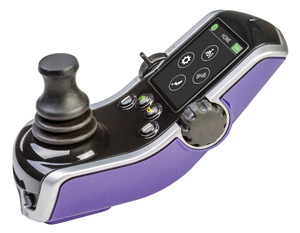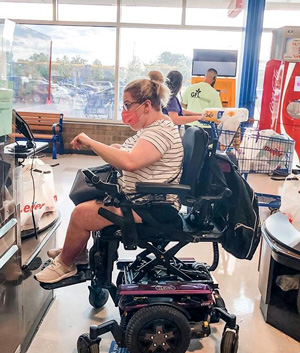Pride Learning Institute
Survey Says: Part One
By: Wade Lucas, PT, DPT, ATP/SMS, Clinical Education Manager
A few evenings ago, my family and I were sitting back and enjoying one of our favorite shows (at least a show that most of my family can agree upon), Family Feud. As I am sure most of you are aware, the host starts out each question with “We surveyed a hundred people…” I thought about if I were to survey people and ask them to name a purpose or benefit of a power mobility device, what do you think the top answers would be? My guess is that a high percentage of the individuals would respond with something along the lines of “to get from point A to Point B” or simply to “complete mobility.” While these answers are absolutely true, many advancements in technology have allowed a power wheelchair to provide so many more functions to individuals than just getting from one place to another. With mobility being the likely number one answer, let’s take a look at what the rest of the survey says.

Independent Repositioning
Individuals who use complex rehab equipment often lack the ability to reposition themselves or complete functional weight shifts while sitting in the power wheelchair. The ability to move and change their position is extremely important for skin protection, completion of activities of daily living, and improving sitting tolerance. When we think of independent repositioning components, often we think of tilt, recline and power elevating leg rests. Typically, these features are used for shifting the person’s weight to redistribute pressure for skin protection. However, these features can provide so much more. Other benefits of tilt, recline, and elevating leg rests include increasing sitting tolerance, improving the person’s visual field, and providing gravity assisted positioning (using gravity to help maintain a desired posture while in the wheelchair). Gravity assisted positioning is an extremely important concept for postural control, speech generation, breathing, swallowing and digestion
Seat Elevation or Power Adjustable Seat Height (PASH) is another important power positioning device to consider. It provides the client a number of benefits and increased opportunities for independence including functional transfer ability, improving reach, psychological considerations (eye-to-eye contact, communication, social engagement), safety in the community, and decreasing soft tissue strain from excessive extension of the neck when looking up.
Customizing and Meeting Client Needs

When we think of controlling or operating the power wheelchair, the first device that we think of is a joystick. While this device is the one we tend to consider first, there are individuals that are unable to safely and efficiently manage the wheelchair with a standard joystick. In this situation, there are likely two options that we have for providing power mobility access to those with more severe impairments, such as weakness, impaired ROM, spasticity/hypertonicity, and impaired coordination/balance. These two options include adaptation of the joystick and alternative drive controls.
We have three options for adapting the joystick. First, we can adjust the location of the joystick with a variety of mounting options. Next, we can adapt the shape of the joystick handle to provide more control for those with impaired hand function, strength, and range of motion. Finally, there are several programming features that can be made to allow more control over the wheelchair. A few of these programming parameters include but are not limited to, to tremor suppression, changing the throw (distance the joystick must be deflected), and reassigning the directions on the joystick to accommodate for decreased range of motion or strength in specific directions.
The second alternative is to change out the joystick entirely. There are joysticks with a variety of force requirements to deflect the mechanical distance (throw) that the joystick is moved to reach a full command. This compensates for decreases in strength, ROM, and motor control that may exist. These alternate joysticks can also be adapted with a variety of mounts, handle shapes, and programming just as the standard joystick. These joysticks can also be utilized at alternate locations on the body including chin, lip, tongue, foot, fingertip, forearm, and head. In the situation where the person lacks the ability needed to control a joystick (proportional device), there are switch-controlled devices available. Switch devices control the power wheelchair with an all or none response, (its either on or off) similar to a light switch. They do not provide that inherent control of speed that a proportional device does. However, switch devices can be used at variety of locations (head, breathe control, knees, and pretty much anywhere consistent, reproducible movement can be found). Switch devices tend to be less efficient and may require more frequent movements to control all four directions, thus fatigue and tolerance could become a factor. However, despite the less efficient means of control that exist with switches, we are able to adapt these switches with programming to improve on the efficiency of use.


